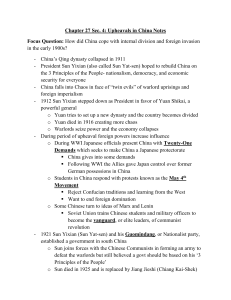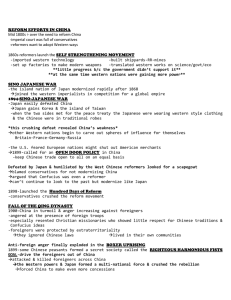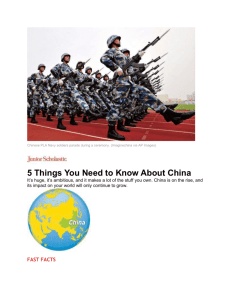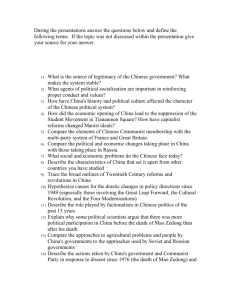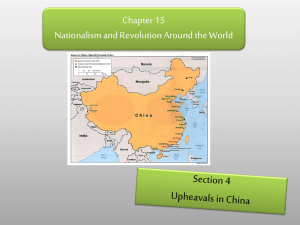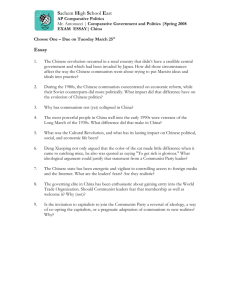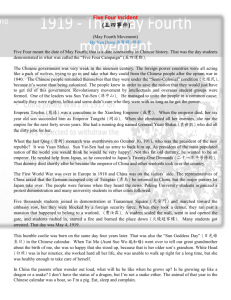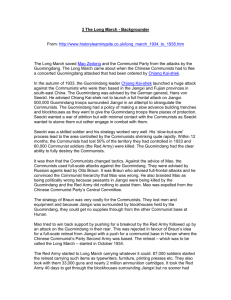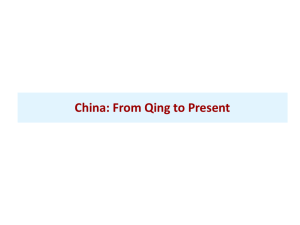Nationalism_China
advertisement
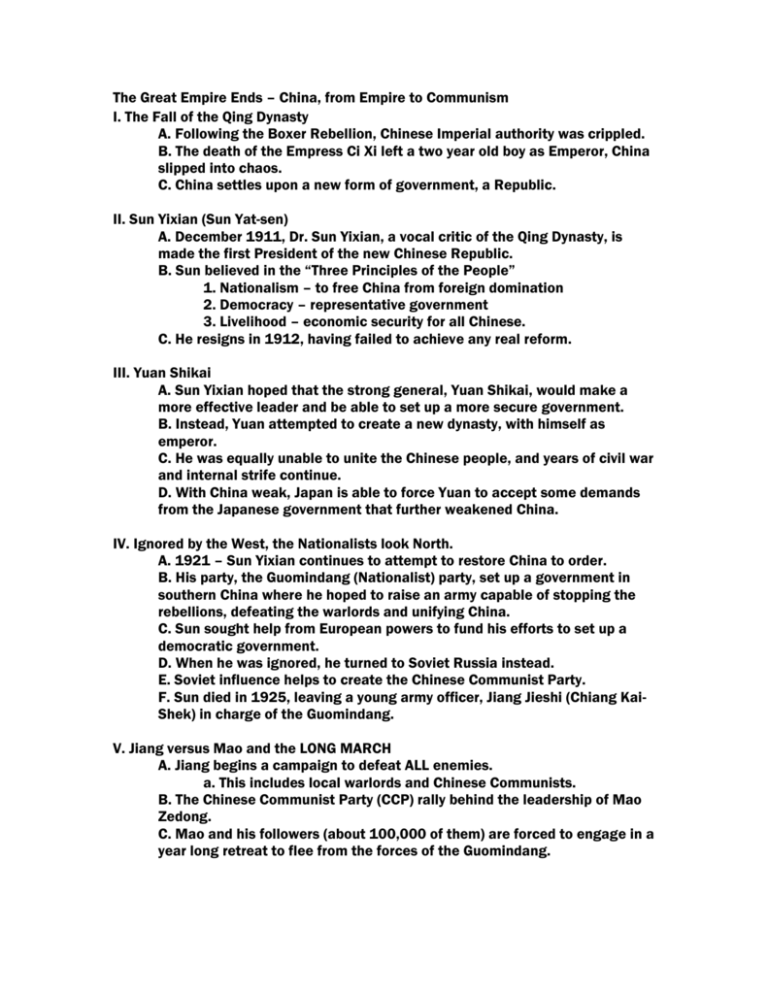
The Great Empire Ends – China, from Empire to Communism I. The Fall of the Qing Dynasty A. Following the Boxer Rebellion, Chinese Imperial authority was crippled. B. The death of the Empress Ci Xi left a two year old boy as Emperor, China slipped into chaos. C. China settles upon a new form of government, a Republic. II. Sun Yixian (Sun Yat-sen) A. December 1911, Dr. Sun Yixian, a vocal critic of the Qing Dynasty, is made the first President of the new Chinese Republic. B. Sun believed in the “Three Principles of the People” 1. Nationalism – to free China from foreign domination 2. Democracy – representative government 3. Livelihood – economic security for all Chinese. C. He resigns in 1912, having failed to achieve any real reform. III. Yuan Shikai A. Sun Yixian hoped that the strong general, Yuan Shikai, would make a more effective leader and be able to set up a more secure government. B. Instead, Yuan attempted to create a new dynasty, with himself as emperor. C. He was equally unable to unite the Chinese people, and years of civil war and internal strife continue. D. With China weak, Japan is able to force Yuan to accept some demands from the Japanese government that further weakened China. IV. Ignored by the West, the Nationalists look North. A. 1921 – Sun Yixian continues to attempt to restore China to order. B. His party, the Guomindang (Nationalist) party, set up a government in southern China where he hoped to raise an army capable of stopping the rebellions, defeating the warlords and unifying China. C. Sun sought help from European powers to fund his efforts to set up a democratic government. D. When he was ignored, he turned to Soviet Russia instead. E. Soviet influence helps to create the Chinese Communist Party. F. Sun died in 1925, leaving a young army officer, Jiang Jieshi (Chiang KaiShek) in charge of the Guomindang. V. Jiang versus Mao and the LONG MARCH A. Jiang begins a campaign to defeat ALL enemies. a. This includes local warlords and Chinese Communists. B. The Chinese Communist Party (CCP) rally behind the leadership of Mao Zedong. C. Mao and his followers (about 100,000 of them) are forced to engage in a year long retreat to flee from the forces of the Guomindang. D. The retreat covers over 6,000 miles and they faced daily attacks from their pursuers. Along the way they are under strict orders to treat all peasants kindly and to pay for anything they desire. E. They finally reach safety with only 20,000 survivors. F. The Long March becomes a symbol of communist heroism and helps to rally Chinese peasants to Mao’s cause. VI. 1931 – Japan invades Manchuria A. A much more professional army, Japan’s soldiers force Jiang and the Guomindang to flee to the interior of China. B. The Japanese army occupies the city of Nanjing and brutalizes the population, killing hundreds of thousands. 1. This incident become known as the “Rape of Nanjing.” VII. The Conclusion – For NOW A. As of 1935, China is split between three factions 1. Guomindang party – led by Jiang Jeshi 2. Chinese Communist party – led by Mao Zedong 3. The Imperial Army of Japan B. We will discuss the conclusion of this after WWII.
